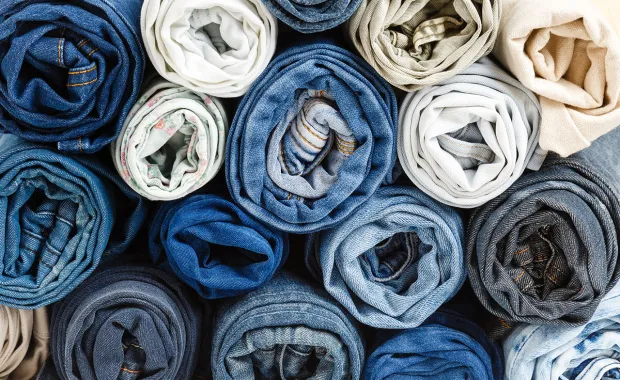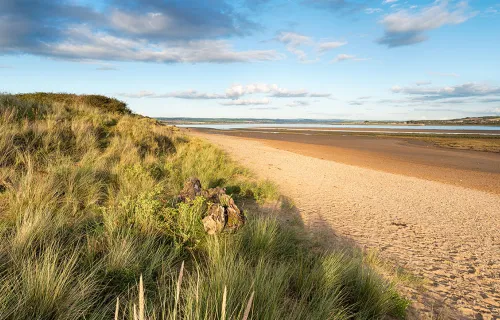The European Commission recently introduced a new legislative proposals package to strengthen the Circular Economy Action Plan. The proposals include "new rules to make almost all physical goods on the EU market more environmentally friendly, circular and energy efficient throughout the life cycle from the design phase to daily use, reuse and end-of-life." As a business designer focused on circular business models, this feels like an incredible step forward.
In the 2022 Voice of Our Clients, 48% of the 1,675 executives interviewed say environmental sustainability is highly core to their organization's ability to continue to create future value for their customers and citizens. In Sweden, where I live, this figure is as much as 72% with 36% rating it a 10 on a scale of 1-10, with 10 being the most important.
This data should indicate that Sweden is well on its way to meeting the country's sustainability goals; yet, there is still progress to be made. To illustrate this point, in 2021 well before December, Sweden reached the so-called "Earth Overshoot Day," which marks when humanity's demand for ecological resources and services exceeds what the planet can regenerate in a given year.
I spend my days understanding how we can truly change the retail and consumer goods industry through innovative projects that seek to get businesses and people to act circularly. Adopting a circular approach is one of the most effective ways to reduce emissions and continue to deliver value.
What does a circular business model entail? As a company, it means selling products made from recycled materials (and not raw materials) and bringing products back into the value chain to reduce waste and convert as few resources as possible into waste. For a customer, this may mean repairing a product or buying used products instead of new ones, thus extending a product's lifespan and reducing one's carbon footprint.
Moving from linear to circular production
The focus on continually growing sales volumes has led to producing products cheaply and quickly to meet customer needs. Since the 1950s, most production has followed linear processes. In a linear production model, companies use raw materials to refine or manufacture products and then sell the product, which often ends up in a waste dump or land refill after a long or short period of use.
A linear model is unviable from a long-term economic perspective and, as most of us know, can be catastrophic for the environment. It doesn't have to be this way. Instead, if we focus on meeting customers' real needs in new and innovative ways, we can continue to deliver value without the hefty CO2 emissions price that comes with the purchase.
For years now, we've overlooked considering the value of a product at the end of its life cycle entirely. Not anymore! It's time to start thinking circularly. With today's global raw material shortages and price rises, transitioning to circular processes is the obvious and likely only way forward.
Getting closer to customers
The economic benefits of a circular approach are significant; however, there are many other advantages of implementing a circular value chain.
Most retailers today are focused on becoming more customer-centric and improving the customer experience. This goes hand in hand with a circular business model. By better understanding customers' needs, retailers can integrate relevant information more easily into the design and development process to ensure their product is recyclable or reusable. Following circular design principles also entails making products from materials that can later be used as raw materials to develop another product. With this approach, waste and excesses can become an additional revenue opportunity.
It also helps to better align products with customer requirements. This, in turn, can encourage producers to use more expensive materials with better quality and manufacture smaller quantities with longer service life, as they know that buyers exist and that the material can be reused. This can reduce overproduction and help businesses move away from a short-term approach of producing goods cheaply and flooding the market in the hopes of someone buying them.
Circularity in practice
A simple example of circularity in practice that I like to quote is a food ingredient called aquafaba. Aquafaba is the liquid found in a can of chickpeas. Instead of throwing it away, it can be used to make vegan mayonnaise or added as an egg substitute in baked foods. On an industrial scale, examples of organizations that have adopted circular business models include Novelis, which makes recycled aluminum products for cars and airplanes, and Swedish Renewcell, which creates new textiles from old ones.
Several of our clients are working toward adopting circular business models. For those seeking to do the same, I recommend asking these questions when charting the way forward:
- What are the customer needs that we want to meet?
- Can they be met by offering a service instead of a product, or do all customers want to own their own "product"?
- Can the product be manufactured using recycled materials?
- How can we ensure that the product ends up as far up the waste hierarchy as possible?
Embracing a circular model is a complex process that requires innovation supported by continuous feedback and change management. But it works, and the benefits are numerous. Working toward circular business models is good for the bottom line, more environmentally friendly and customer-oriented. It can also open up entirely new business opportunities in the form of partnerships and drive customer and employee engagement and loyalty.





